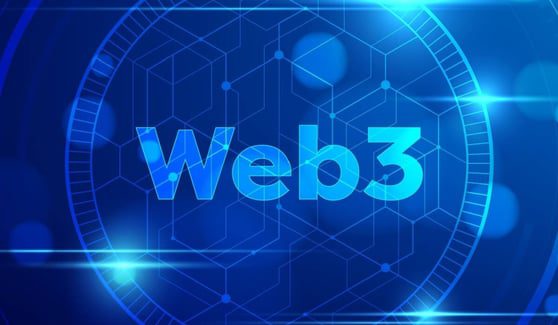The term “Web3” alludes to the decentralised future generation of the internet, fundamentally different from the centralised Web2 ecosystem built on a client-server architecture. In Web2, a server hosted by companies like Google Cloud or Amazon Web Services houses the backend code that drives apps (AWS). This arrangement concentrates power, allowing these corporations—collectively known as Big Tech—to obstruct access to anyone or trade users’ sensitive data for cash.

Web3’s architecture, on the other hand, decentralises this unfair advantage currently held by Big Tech, increasing transparency and fostering innovation and granting people control over their data and online interactions. There is neither a server nor a client in Web3. Instead, peer-to-peer file sharing is available through the Interplanetary File System (IPFS) feature.
Web3 applications lack trust and are permissionless, but some private blockchains do. While trustless refers to the property where users need to trust the network and not network participants, permissionless refers to seamless inter- and intra-platform communication capability. Web2 apps, on the other hand, depend on user trust and centralised authority approval to function.
Can Web3 Solve The Fundamental Problems Of Web2?
Businesses can benefit from prospects that are unthinkable because of Web3’s qualities. Decentralisation and the permissionless cybersphere were strictly sci-fi concepts. However, Web3 aims to fix the issues of Web2 with the following features, thereby opening the door to a decentralised internet era.
1. Data Security

Security concept: blue opened padlock on digital background, 3d rendering extensive, central database that stores data is very prone to attack. Just one system needs to be breached by hackers to compromise sensitive user information. Insiders frequently contribute to the disclosure of important information to outside, malevolent parties. Decentralised systems are built to resist this type of conduct by some players, making Web3 security more effective at protecting data than Web2 systems.
On the other hand, as practically every business moves toward being data-driven and digital, the potential for hostile assaults has increased enormously. Vandalism in cyberspace has become a severe concern, endangering financial and reputational harm. Decentralisation raises the level of security, if not totally the issues.
2. Financial Freedom
Every participant in Web3 is a stakeholder. Web3 encourages financial freedom with the support of a variety of technologies. The independence participants experience in decentralised finance (DeFi), where anybody can freely engage in financial operations, is a prime example.
DeFi becomes more widely used and accessible upon meeting the Know Your Customer (KYC) and Anti-Money Laundering (AML) regulations. Furthermore, Web3 payments are made through cryptocurrencies, though it may also integrate fiat payment systems, whereas Web2 prices are in fiat currencies.
3. Data Ownership
Decentralisation eliminates Big Tech’s monopoly by giving users more control. Users have the choice of making their data public or private. The system is inherently more stable than centralised systems because computing power and decision-making are between the service provider and consumers. Unlike centralised systems, the entire operation depends on a server cluster, central entity, or person.
Although several Web2 apps have shifted to multi-cloud hosting, genuinely decentralised projects have a higher level of resiliency. For their application, businesses can choose a topography based on the challenges they need to overcome and their data landscape.
4. Automation
The system that can run without human involvement is automated using smart contracts. The code reflects the agreement between several parties, carrying out irreversible transactions. Smart contracts significantly reduce operational expenses, do away with prejudice, and increase transaction security.
However, projects need to be aware of security flaws in the coding of intelligent contracts that thieves can exploit to seize the money. Security vulnerabilities in smart contracts can be avoided by having a team with experience in vulnerability assessments that will audit the smart contract code using a combination of manual and automated tools. Zokyo, which specialises as an end-to-end security resource for blockchain-based projects, is a Web3 illustration of accelerating automation.
5. Transparency
Transparency is a feature of decentralised ecosystems by design. Nodes collaborate to ensure the system operates without interruption, and no node may act independently. Through the casting of votes, even other people can participate in the government’s decision-making process.
Because Web3 transactions are virtually irreversible and traceable, no one can make database modifications after a transaction. Web3 is now a powerful tool against fraud as a result of this.
How Web3 Resolves Interoperability Issues
A key element of computer systems that fosters frictionless data transmission across Web2 and Web3 projects is interoperability, sometimes known as “cross interaction”. Engineers combine Web2 platforms with Web3 platforms to enable data sharing, as was the case with this Twitter function. For instance, Twitter launched NFT profile images for Twitter Blue (checkmark) subscribers for iOS in January 2022 as an illustration of this capability. By connecting their Twitter account to the wallet where the NFT is stored, users can attest to the ownership of the NFT.
The effective operation of applications also depends on intra-Web3 communication. Compatibility with Earned value management (EVM) is a crucial need for any project that has to be interoperable. This is due to the Ethereum blockchain hosting many DApps in Web3.
What Are The Challenges With Web3?
Even though Web3 is considered decentralised, developers must combine Web3 applications with Web2 protocols to make them function. As a result, decentralised applications now depend on a centralised infrastructure.
Blockchain technology is developing quickly, and it will take time for authorities to keep up. The lack of regulatory clarity facing Web3 is another significant obstacle. Due to a lack of governmental control, specific projects have engaged in unethical activities, as seen in the FTX scandal.
Another challenge facing Web3 applications is rug pulls. It occurs when a malevolent developer purposefully leaves a window in the code open and then utilises it to steal cryptocurrency earnings. Everyone in the cryptoverse is on guard against fraudulent people getting past the barriers.
When Web2 safety precautions include conducting research before making an investment, avoiding disclosing passwords, and being vigilant while browsing will assist, there are also unique techniques for Web3.
Safety precautions to consider before investing in web3 projects include; examining the open-source code before making a transaction can be the optimal strategy to prevent rug-pulling. Wallets that alert users to the potentially harmful nature of the contracts they are interacting with may also save them money.
Conclusion
The potential of Web3 to rectify the challenges of Web2 is boundless. Business developers should focus on Web3 in ratifying the decentralisation of technological tools to help businesses.

